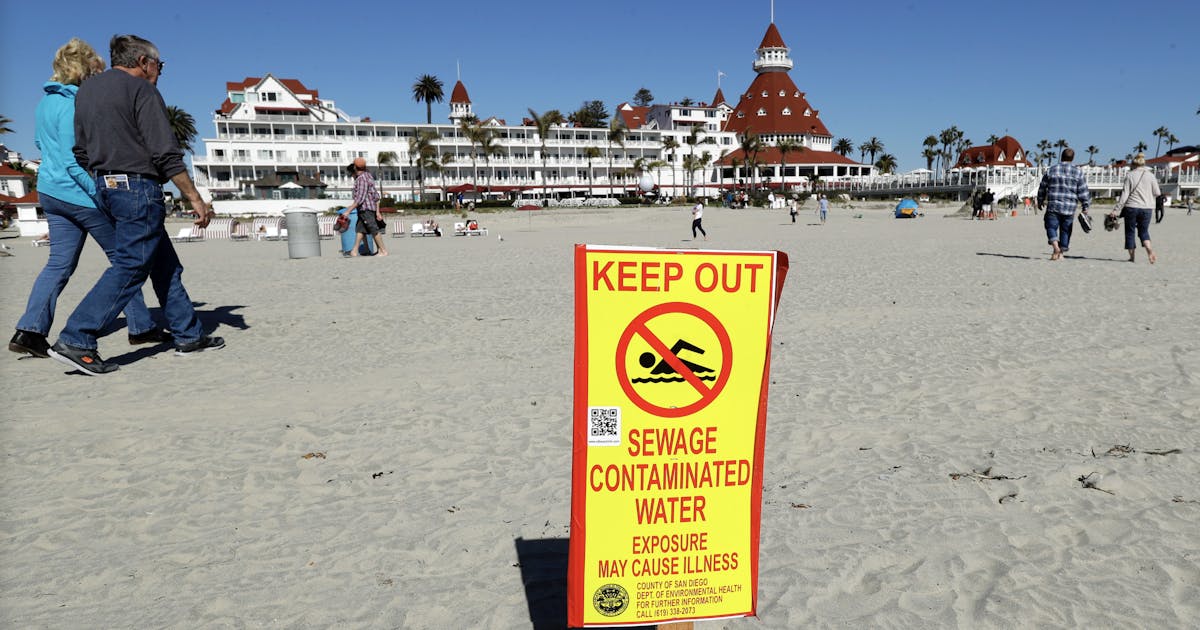The California Beach Town Awash in Poop

🌈 Abstract
The article discusses the long-standing sewage pollution crisis along the U.S.-Mexico border, particularly in the Tijuana River that flows from Mexico into California. It explores the complex history, causes, and impacts of the issue, as well as the challenges in finding a sustainable solution.
🙋 Q&A
[01] The Sewage Crisis in Imperial Beach
1. What were the key events that led to the sewage crisis in Imperial Beach, California?
- In March 2017, Suzanne McKay contracted spinal meningitis after a walk on the beach, likely due to bacteria from sewage in the seawater.
- In early 2017, a major sewage pipeline break in Tijuana, Mexico caused up to 256 million gallons of sewage to flow into the Tijuana River and out to the ocean, reaching Imperial Beach.
- This spill was a "signal event" that divided life in Imperial Beach into "before" and "after", with prolonged beach closures and negative impacts on the local economy.
2. What are some of the health impacts that residents of Imperial Beach have experienced due to the sewage pollution?
- Doctors Kimberly and Matt Dickson estimated that 10-15% of their clinic's cases were related to sewage-associated ailments like diarrhea, skin infections, sinus issues, and asthma flare-ups.
- A study estimated that nearly 1 in 25 swimmers in Imperial Beach could be getting sick from norovirus in the polluted waters.
- Residents worry about the potential for more serious diseases like cholera or shigella to be introduced through the sewage flows.
3. How have the sewage issues impacted the community of Imperial Beach?
- Sections of Imperial Beach have been closed to swimmers for over 900 consecutive days due to the pollution.
- Businesses like bars and restaurants have seen a decline in customers, and lifeguards are leaving for other towns.
- Homes in Imperial Beach are estimated to be discounted by up to 50% compared to similar coastal properties in the region.
[02] The Causes and Challenges in Tijuana
1. What are the key factors that have contributed to the sewage infrastructure problems in Tijuana, Mexico?
- Tijuana's population has grown exponentially from 21,000 in 1940 to nearly 2 million today, outpacing the development of sewer infrastructure.
- Many residents in informal "colonias" settlements lack access to the sewer system and rely on makeshift septic tanks or latrines.
- Funding and maintenance issues have plagued Tijuana's main sewage treatment plant, leading to its degradation and the discharge of largely untreated sewage.
2. What are some of the challenges in addressing the sewage issues on the Mexican side of the border?
- Residents in informal settlements often lack formal land titles, making them ineligible for sewer connections even if they are willing to pay.
- The Tijuana water utility (CESPT) faces financial constraints, with nearly 80% of the water flowing through its pipes going unbilled.
- There is high turnover in CESPT leadership, with 13 directors in 10 years, making it difficult to implement long-term solutions.
3. How have border security measures impacted the management of the Tijuana River and sewage flows?
- A new border fence project by Customs and Border Protection includes features that could exacerbate flooding and debris buildup in the river, raising concerns from local officials.
- The border security focus has diverted attention and resources away from addressing the sewage infrastructure problems.
[03] Challenges in Bilateral Cooperation
1. What are some of the challenges in the U.S.-Mexico cooperation to address the sewage crisis?
- There is a lack of clear responsibility and accountability between the two countries for maintaining the shared infrastructure and addressing the sewage issues.
- Political tensions and shifting priorities in the U.S.-Mexico relationship have made it difficult to sustain consistent attention and funding for the problem.
- The International Boundary and Water Commission, which oversees the shared infrastructure, has limited tools to compel action from Mexico on the sewage issue.
2. How have funding and resource constraints impacted the efforts to address the sewage crisis?
- While $300 million in federal funding was secured through the USMCA agreement, it is widely seen as insufficient to fully resolve the issue.
- Maintenance and upgrades to the U.S. treatment plant have been underfunded, leading to its deterioration over time.
- There are concerns about the long-term sustainability of solutions if Mexico does not have the resources to maintain its own infrastructure.
3. What are the broader implications of the sewage crisis for the U.S.-Mexico border region?
- The sewage issue highlights the interconnectedness of the border region and the challenges of trying to address environmental and public health problems through a narrow, nationalistic lens.
- The crisis demonstrates the limitations of a border security-focused approach, as sewage and other environmental issues cannot be contained by physical barriers.
- Resolving the sewage crisis will require sustained bilateral cooperation and a more holistic approach to managing shared resources and infrastructure.